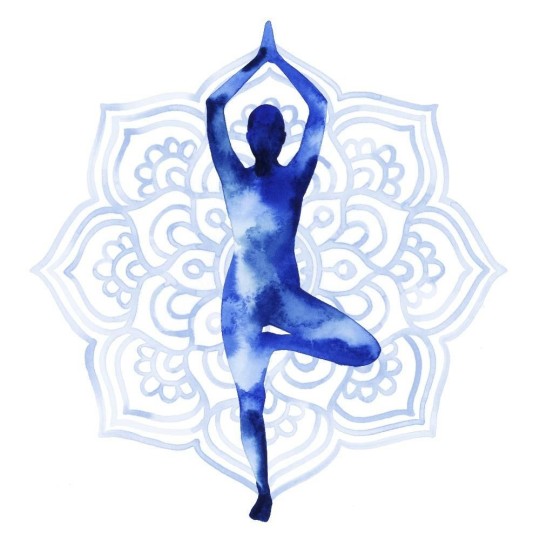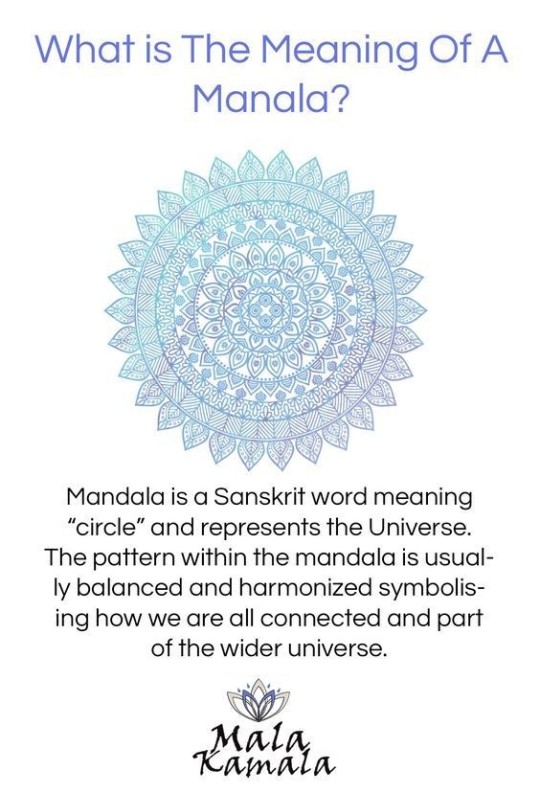Don't wanna be here? Send us removal request.
Text
The History of Yoga and Its Different Philosophies
Yoga, in today's world has become a commodity and something of a statement. Arguably India's greatest cultural export, yoga has morphed into a mass culture phenomenon. All our popular assumptions about this ancient science actually date back to the last 100 -odd years. Yoga has been subjected to reinventions for thousands of years. Yoga, today involves a complex regimen of postures (asanas) - that are either held for a long duration of time or are executed in a rapid manner - along with breath control (pranayamas). However, the ancient Hindu texts, like Bhagvad Gita and the Yoga Sutras of Patanjali make no mention of body postures and breathe control. They have laid more stress on the theory and practice of meditation (dhyana).
So, what are we missing here? How did Yoga undergo such a transformation since its use in the classical scriptures? To understand this, let us have a brief look at the history of yoga.
The word Yoga was first mentioned in the oldest sacred Hindu scriptures, The Vedas. The Vedas are a collection of texts that describe rituals, hymns, mantras and songs to be used by Brahmans, or the Vedic priests. The first mention of the term yoga was found in a hymn to the Sun-God in the Rig Veda (1700-500 BCE). The Vedas were known to contain the oldest known Yogic teachings and these teachings found in the Vedas are called Vedic Yoga. This is characterized by rituals and ceremonies that strive to surpass the limitations of the mind. During the period of Vedic Yoga, people practiced the ritualistic way of life. Various rituals, ceremonies and sacrifices were considered as a means to connect to the spiritual world.
Pre-classical period 500-200 BCE:
The vedic priests or the Brahmanas, redefined and developed the yoga and they then documented their beliefs and practices in the Upanishads. Upanishads are a huge work that contains more than 200 scriptures. Upanishads changed the idea of ritual sacrifice of Vedas and taught the principles of sacrificing the ego through a medium of self-knowledge, action (Karma yoga) and wisdom (Jnana yoga). Upanishads also introduced the acoustic spells, most prominent amongst them being, 'OM', which is the spell of the Supreme Being.
Yoga also shares some characteristics with Buddhism. In the 6th century, Buddha started teaching Buddhism, which laid stress on meditation and the science of asanas. It was during this period that a number of principles of yoga theory and practice were formulated. Siddharth Gautam, was the first Buddhist to practice yoga and he became the "Awakened" or "Enlightened" One (Buddha), and so was liberated from future rebirths, realizing the extinction of suffering (nirvana) at the end of his life at the age of 35. Amongst the Indian religious groups, the Jains were the last ones to inculcate the teachings of Yoga. In 1200 BC, the great Jain teacher Rishaba, who was the exponent of the tradition of Jainism, emphasized on the principles defined by yoga, which involved efforts dedicated to the liberation of the spirit.
Later, around 500 BC, the Bhagvad Gita was scripted. Today, it is one of the oldest scriptures that define the yoga. The Gita is mainly result of the conversation that takes place between Prince Arjuna and Lord Krishna. The Gita mainly states that, our life should be filled with actions, irrespective of the rewards to be gained. Our actions have to free from the ego and be benign in nature. The Bhagvad Gita had reiterated the doctrines found in the Upanishads. Gita states that, each man should follow Bhakti (devotion), Jnana (Knowledge) and Karma (selfless actions). Teachings in the Bhadvad Gita strive to bring about unification between the Bhakti Yoga, Jnana Yoga and Karma Yoga - stating that each is responsible for the other.

Classical Period (200 BCE-500 CE)
The classical period is mainly marked by the creation of the Yoga sutras By Sage Patanjali in the 2nd century. It is composed of 195 aphorisms or sutras (from the Sanskrit word i.e., thread) that explain the Raja Yoga or the Classical yoga and its underlying principle, Patanjali's Eightfold path of 'Ashtanga Yoga' (Eight Limbs of Classical Yoga). Patanjali's sutras are the first compilation of the yoga philosophy.
Sage Patanjali believed that each individual is a composed of matter (prakriti) and spirit (purusha). He further believed that the two must be separated in order to cleanse the spirit - a stark contrast to Vedic and Pre-Classical Yoga that signify the union of body and spirit.
Post Classical Yoga (500-1500CE):
In this period, yogic principles underwent a sea-change. Here yoga no longer tries to liberate the person from reality but teaches a person to accept the present and live in it. This period asserts the teachings of Vedanta (philosophical system based on the teachings of the Upanishads), that there is fundamental unity in everything in the universe. In this period, yogis began to exploit the hidden power of the human body. As a result, yogic masters designed many new techniques that would lead to healthy bodies and prolong life. Hatha Yoga was a product of such teachings, which is now practiced widely in the world.
Modern Yoga:
Yoga came to the attention of an educated western public in the mid- 19th century along with other topics of Indian philosophy, when yoga masters started travelling to West and attracting attention and following. The first Hindu teacher to actively promote and broadcast various aspects of yoga to the western audience was Swami Vivekananda. He had come to deliver a talk in The Parliament of Religions, Chicago, in 1893. During his talk, Swami Vivekananda, a disciple of Saint Ramakrishna, addressed the gathering as, 'Brothers and Sisters of America". Through these words, he attracted many students to yoga.
In the early 21st century, Hatha Yoga was strongly practiced and followed in India due to the works of T. Krishnamacharya, Swami Sivananda and other yogis practicing Hatha Yoga. In was during 1930s and 40s, that Yoga gained more public acceptance due to its celebrity endorsement. In 1965, Shrila Prabhupada came to the United States and founded the International Society for Krishna Consciousness (ISKON). He spread a movement based on Bhakthi Yoga (yoga of devotion).

During this period, most of the significant Indian teachers propagating yoga were from two families - one belonging to Sivananda Saraswati (1887-1963) and the other to Tirumalai Krishnamacharya (1888-1989). Many yoga masters including B.K.S. Iyengar (1918-2014), K. Pattabhi Jois (1915-2009), Swami Vishnudevananda (1927-1993), and Swami Satchidananda (1914-2002) were actively teaching the philosophies of Hatha yoga.
Today, Yoga has gained world-wide popularity and is used daily for profound mental, physical and spiritual awareness along with its benefits as a form of stretching, and as an enhancer of breath control and of core strength.
0 notes
Quote
You don’t have to wait for something ‘meaningful’ to come into your life so that you can finally enjoy what you do. There is more meaning in joy than you will ever need. The ‘waiting to start living’ syndrome is one of the most common delusions of the unconscious state.
Eckhart Tolle (via lazyyogi)
873 notes
·
View notes
Text
5 Yoga Symbol Meanings






Image Sources : https://pin.it/6PhjhCj]
3K notes
·
View notes
Text
Lila: The Playground

The rusty rustle of the swingset with the heavy jingle of chains, the pattering stomps of little feet, and the cacophony of shouts, laughter, and cries.
If you were to ask me one thing I missed most from childhood, I would say the playground. Can you recall a stage more dramatic and engaging than that space filled with joys and injuries, games and toys? New friends made in an instant, games of imagination transforming the mundane into any potentiality, or enjoying the simple rush of going down the slide.
Why don’t we have adult playgrounds? The seriousness of getting older seems to eclipse the natural glee of youth. We expect more of the things intended to make us happy. Instead of a swing or a game of tag, we look to career achievements, material goods, and exotic travel. And while those are fine as they are, how can any of them be enjoyed if we have lost touch with that uncontrived play of the playground?
In Indian philosophy there is a sanskrit word, “Lila.” It may be translated as the “divine play.” Many have asked for the meaning of life, have inquired as to their soul’s purpose, or why this whole universe exists at all. The philosophical response is lila. All of this is a playground of sorts.
While within our tiny society we may have a distinct role and purpose and circumstance, none of it has meaning outside the human bubble and that bubble itself floats within a cosmic playground. Remember how fun blowing bubbles used to be? If you have bubbles, go blow some right now. I’ll be jealous.
No identities, beliefs, opinions, goals, or personal history are necessary to play on the playground. In fact, these are the very trinkets taken up and discarded in the games themselves: princes and princesses in a castle, warriors on a battlefield, or astronauts in space. The thoughts and emotions of each character within the game are abandoned the moment the game is over. Taken seriously, these things become the ego. Taken as play, they are just toys.
“Man suffers only because he takes seriously what the gods made for fun.” ~ Alan Watts.
Joining in at the cosmic playground is what the spiritual path is intended to remind us. The person we have grown used to thinking ourselves to be is just a game that has gone on too long and become a burden. Even our idea of “the world” suffers as a burden. Spirituality loosens our grip on this dull game and points us back toward the playground. It can be uncomfortable, like being the new kid at a new school at recess. But it can’t be helped; you just have to cross your fingers and jump in.
“The only way to make sense out of change is to plunge into it, move with it, and join the dance.” ~ Alan Watts
The goal I always recommend for spiritual practitioners is peace, freedom, and happiness. These are all embodied in their highest form through self-realization, or enlightenment. Yet they are not the result of self-realization, rather they are the practice and the fruit that unfolds such realization. And can you think of a better activity than play itself to embody the qualities of peace, freedom, and happiness?
The playground is the goal and also the path. By playing, the cosmos becomes a playground. Because the cosmos is a playground, you can play.
Namaste :)
97 notes
·
View notes
Photo


Half Punch April day 5:
20 x pushups/high-low boat/squats
YWA - gentle morning yoga sequence
10 x pushups/high-low boat/squats
6.5k run - struggled a bit towards the end but km 6 was only so slow because my earphone cables got caught by the jacket zipper all the time. Pretty satisfied overall.
10 x pushups/high-low boat/squats
YWA - post-run yoga
10 x pushups/high-low boat/squats
All done 😊.
31 notes
·
View notes
Quote
In moments of pure solitude, you’ll find that silence has the loudest of sounds. You’ll think and feel more deeply, more profoundly. And suddenly where you normally saw a blue sky you start to notice the little light bulbs, the birds and the bugs from miles away. You become present in the here and now. The world seems to become a different place and you’re observing it, you’re a part of it.. you’re becoming it. You can distinguish each and every sound. And you sigh, because… this is what it means to be alive.
Annedi Bergsma (via my-bundle-of-thoughts)
89 notes
·
View notes
Quote
The self-confidence of the warrior is not the self-confidence of the average man. The average man seeks certainty in the eyes of the onlooker and calls that self-confidence. The warrior seeks impeccability in his own eyes and calls that humbleness. The average man is hooked to his fellow men, while the warrior is hooked only to infinity.
Carlos Castaneda (via lazyyogi)
291 notes
·
View notes